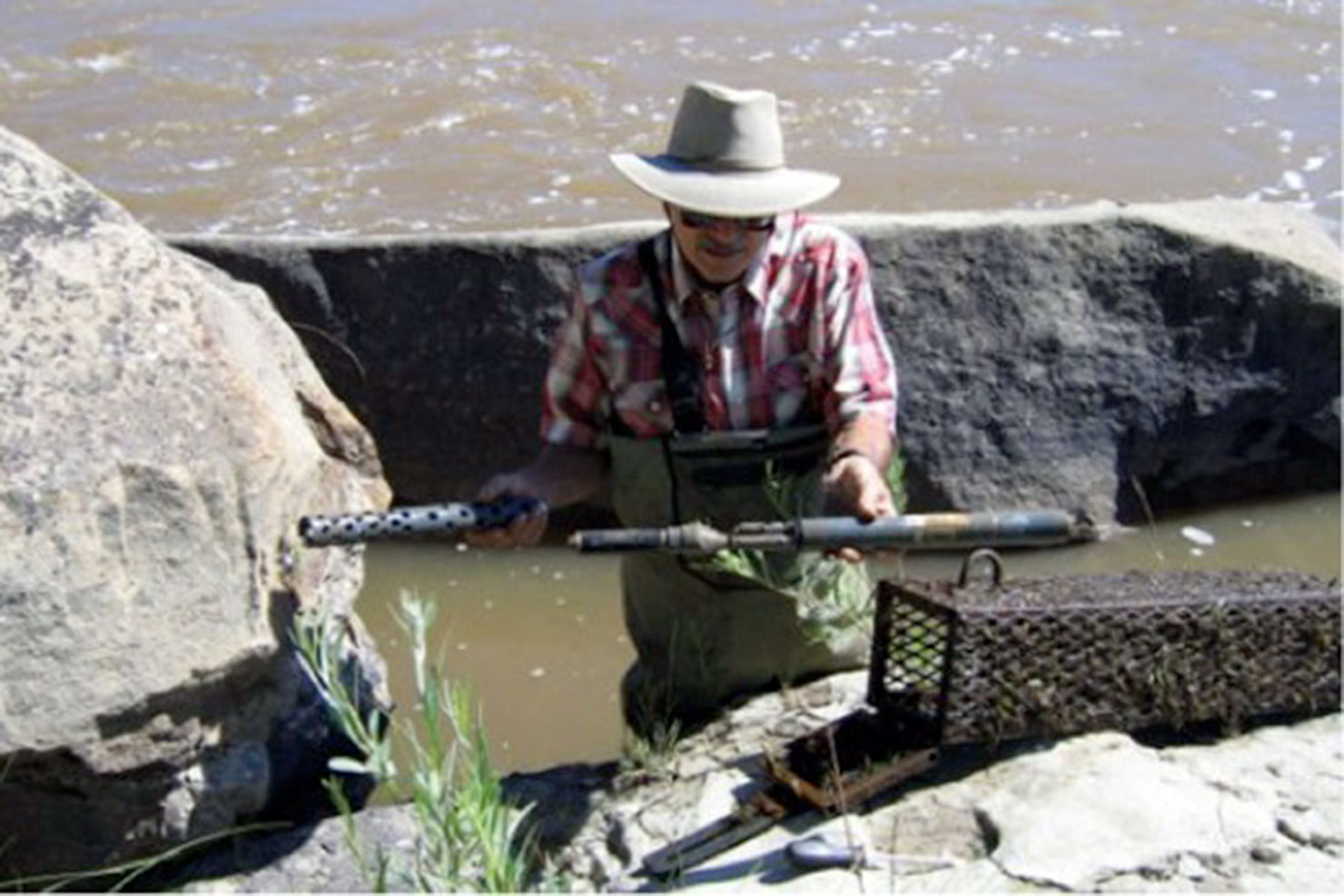The Southern Ute Water Quality Program continues to monitor the Animas River for impacts from the August 5th, 2015 Gold King Mine spill. Environmental Protection Agency (EPA) contractors working on the Gold King Mine accidentally triggered a release of approximately three million gallons of mine waste water. The discharge, rich in toxic heavy metals and low pH, flowed into Cement Creek. Cement Creek joins the Animas River in Silverton, Colo. and showed low pH and high metals content as a result of the spill. The Southern Ute Indian Tribe (SUIT) was notified of the spill by the State of Colorado on August 3rd and immediately enacted its emergency response team and alerted the State of New Mexico. The waste took approximately three days to reach the northern border of the Southern Ute Reservation in the early morning hours of August 7th.
The concern to aquatic life, human health, agriculture and recreation from the spill surrounds low pH values that can kill crops and aquatic life on contact, and high heavy metal concentrations, which when ingested, can cause adverse effects to humans and livestock. Metals pollution from mines comes in two forms, total and dissolved. Total metals are large molecules, often bound to sediment; this is the visible portion of the pollution that turned the Animas River a shocking orange yellow. Dissolved metals are smaller, not visible and readily available for uptake by animals and plants, they are toxic at elevated concentrations.
The Silverton area has been releasing low pH and high metals water into the Animas River for hundreds of years as a result of natural process and mining operations. Metals pollution had not reached the Southern Ute Indian Reservation because of dilution from tributary streams and because of buffering impacts of limestone outcrops in the northern Animas Valley. Limestone increases pH and make heavy metals less toxic to aquatic life.
To assess the immediate impacts of the spill, the Southern Ute Environmental Programs Water Quality Staff began to collect pre-spill water quality and macroinvertebrate samples before the spill hit the Reservation. In addition, the Southern Ute Water Quality Programs (WQP) deployed instruments in the river that track pH, dissolved oxygen, temperature and conductivity at 30-minute increments. The WQP began coordination with EPA, Colorado, La Plata County and many other local entities to coordinate monitoring locations, analyses and other response efforts. The WQP collected daily water samples from the River for two weeks following the spill, collected drinking well samples, continued monitoring of the continuous reading instruments, collecting post spill macroinvertebrate data.
To assess whether the Animas River has returned to normal levels, the WQP compiled historical data on the Animas River for comparison and also looked at Colorado Water Quality Standards set to protect human health and the environment. The WQP has been collecting water quality data on the Reservation since 1992 and is in the process of creating Tribal Water Quality Standards.
The WQP noted increased metals concentration in the Animas on the day of the spill that quickly rebounded to pre- spill concentrations. pH dropped on the reservation only slightly, and never went below pH 7.4 Trout, for example, prefer pH in the range of 6-9. Macroinvertebrate samples collected one day before the spill were compared to macroinvertebrates collected four days after spill shows no change in those populations.
While the data show no residual Gold King Mine release impact, the WQP continues to monitor the Animas River to be sure there is no threat to tribal members or tribal waters. Specifically, the WQP is collecting water samples monthly, macroinvertebrates and sediment twice a year, fish tissue samples annually and quarterly assessing 13 tribal member wells, used for drinking water, neighboring the Animas River. We will continue monitoring for will be monitoring in 2018 to determine any long term impacts.
Please contact Curtis Hartenstine, Water Quality Program Manger, with any questions about the spill, or with any other water quality concern you may have. 970-563-2217 charten@southernute-nsn.gov.






